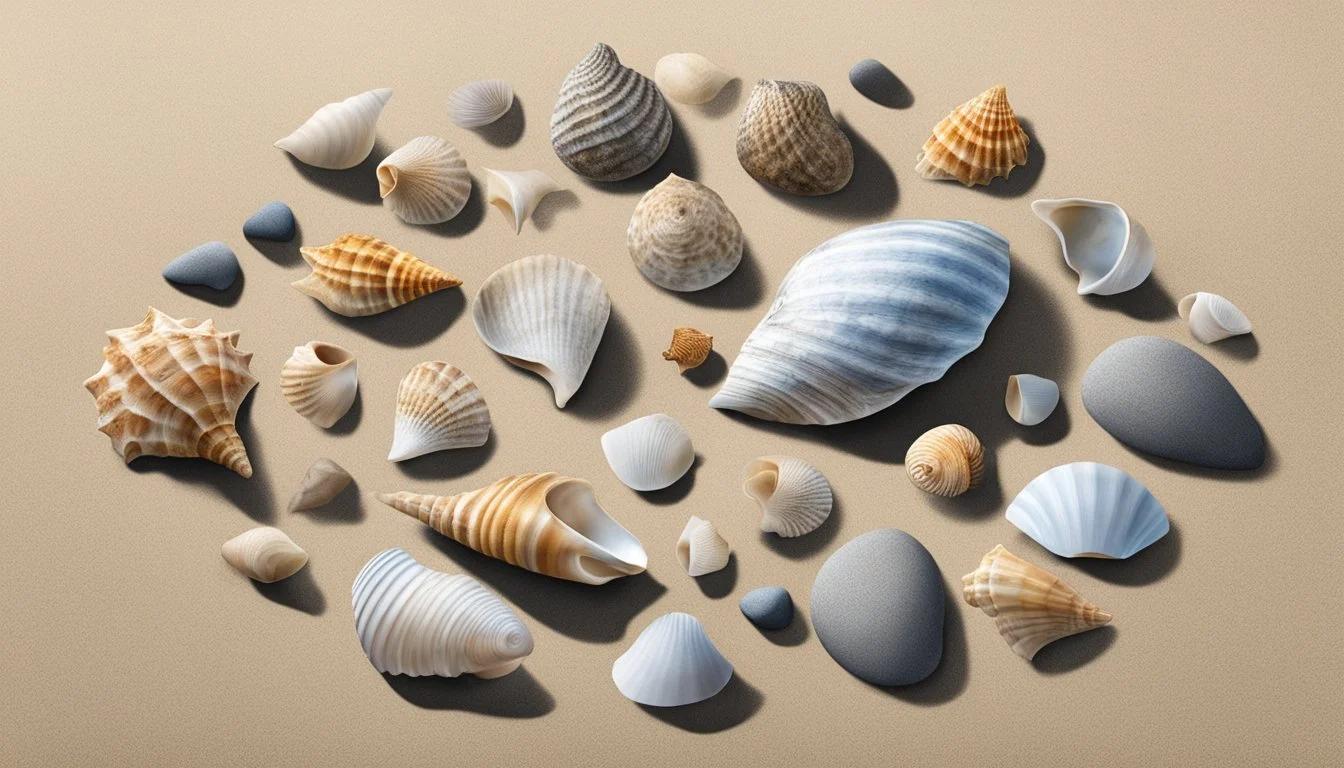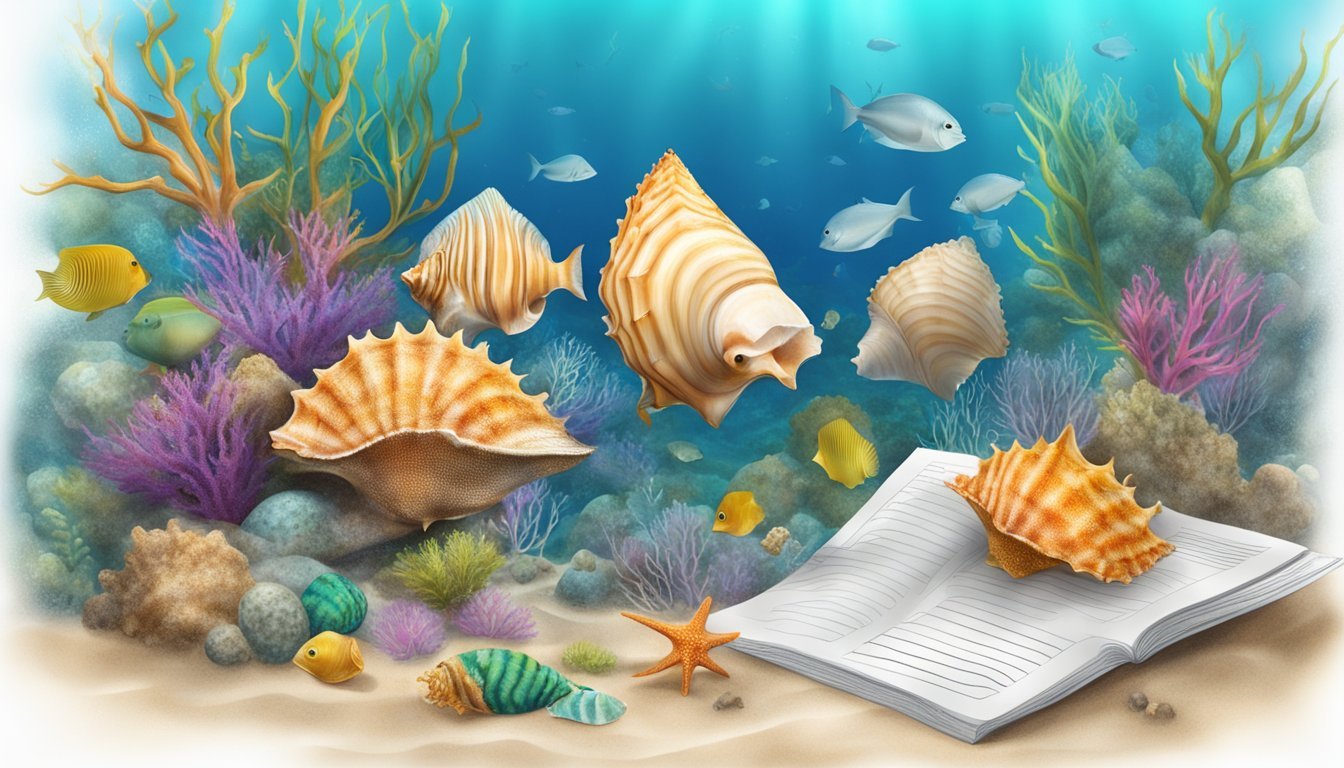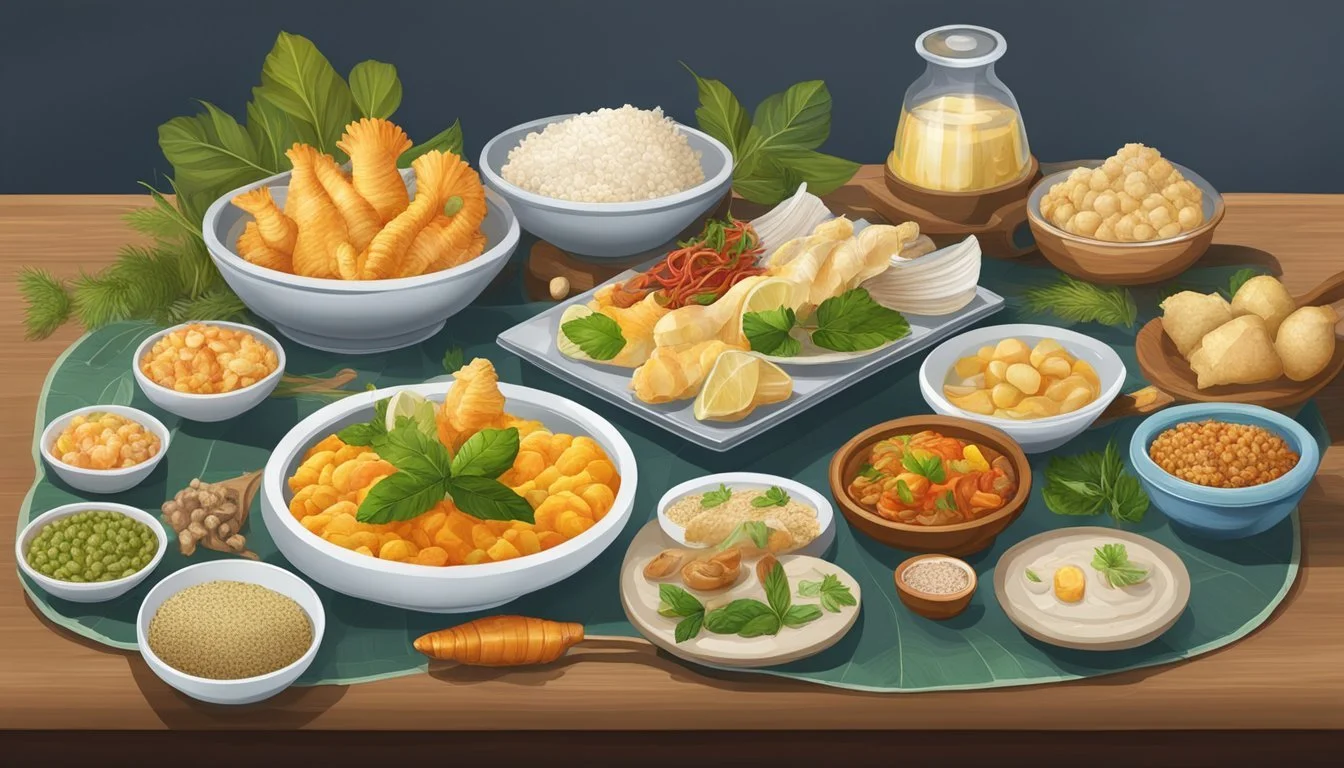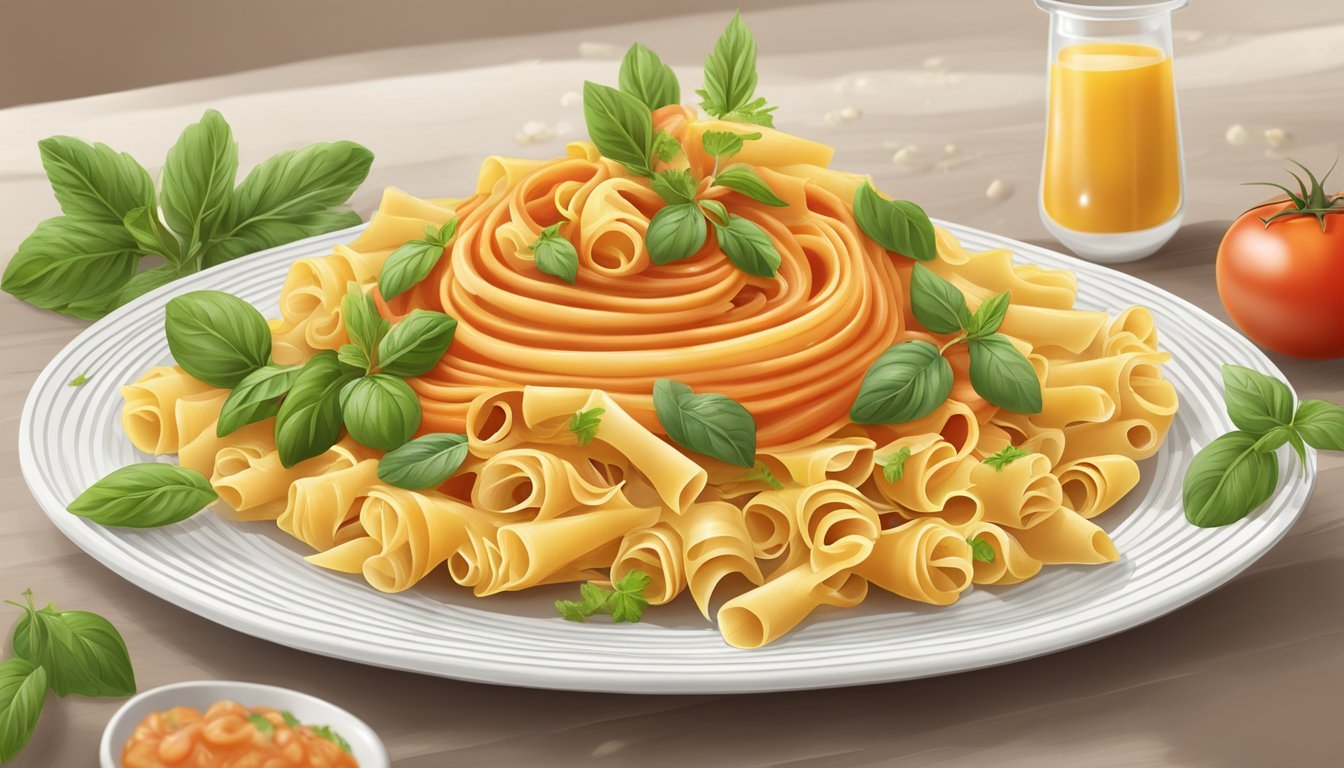Conch Substitutes
Top Alternatives for Seafood Recipes
For those seeking alternatives to conch in their favorite seafood dishes, several viable options are available. Shrimp is an excellent substitute, offering a familiar texture and a slightly sweet flavor reminiscent of conch. This crustacean is widely accessible and can be used in conch fritters, salads, and soups, making it a convenient choice for home cooks.
Clams are another strong contender for replacing conch. They provide a similar chewy texture and can seamlessly integrate into various seafood recipes, from chowders to ceviche. Whether steamed, grilled, or incorporated into stews, clams bring a versatile touch to your table.
For a closer match in flavor and use in traditional conch dishes, crayfish (or spiny lobster) is worth considering. Crayfish mimics the taste and texture of conch closely and can enhance the same recipes—from savory stews to crispy fritters—while supporting sustainable seafood practices.
Understanding Conch
Conch, particularly the queen conch, is a type of sea snail widely recognized for its culinary versatility and unique taste and texture. This section will delve into the biology, culinary uses, flavor profile, and cultural significance of conch.
Biology of Conch
Conchs are marine mollusks belonging to the family Strombidae. They have a distinctive spiral shell that can vary in size and color. The queen conch, found primarily in the Caribbean and the Bahamas, can grow up to 12 inches long.
These sea snails play an essential role in their ecosystem, contributing to the marine food web. They consume algae and detritus, helping to maintain healthy seagrass beds. Overfishing and habitat destruction have led to declining populations, necessitating conservation efforts.
Culinary Uses
Conch meat is a delicacy in various cuisines, especially in the Caribbean. It is a versatile ingredient used in dishes such as conch salad, conch fritters, and conch chowder. The meat is usually tenderized to reduce its naturally chewy texture.
In the Bahamas, conch salad is a popular dish made with raw conch, vegetables, and citrus juices, offering a fresh and tangy flavor. Conch fritters are deep-fried balls of batter mixed with minced conch, while conch chowder is a hearty soup often enjoyed in coastal areas.
Conch Taste and Texture
The taste of conch is mildly salty with a hint of sweetness. Its texture can be quite chewy, similar to calamari or clams. When prepared properly, particularly when tenderized, it becomes more palatable and less tough.
Raw conch, often used in salads or ceviche, has a slightly slimy texture but retains a fresh, briny flavor. Cooking methods such as grilling, frying, or stewing can enhance its taste, making it a popular choice in many seafood dishes.
Conch in Cultural Cuisines
Conch holds significant cultural importance in the Caribbean and the Bahamas, where it is a staple in the local diet. It is also found in other cultural cuisines, reflecting the sea snail’s widespread appeal and adaptability.
In Bahamian cuisine, conch is celebrated in national festivals and local eateries. Its usage spans from street food to gourmet restaurant menus. The Caribbean also embraces conch in various traditional recipes, showcasing the shellfish’s versatility and cultural resonance.
Conch’s role in cultural cuisine underscores its value beyond just a seafood option, highlighting its integral place in the culinary heritage of coastal communities.
Substitutes for Conch
Conch can be swapped with other types of seafood or even vegetarian options depending on the dish and dietary preferences. This allows for flexibility in creating similar flavors and textures with easily accessible ingredients.
Shellfish Alternatives
Shrimp is a popular substitute for conch. Its sweet and firm texture makes it a good fit for dishes like fritters or salads. Crayfish and crab can also be used, offering a mild flavor that retains some of the sweetness found in conch. Clams and oysters, with their chewy texture, can replace conch in stews or soups. These shellfish provide a similar oceanic flavor profile that complements many recipes traditionally using conch.
Fish Substitutes
When it comes to fish, calamari (squid) serves as a notable substitute for conch. Its tender yet slightly chewy consistency mirrors that of conch. Other options include salmon, which can be diced finely for use in salads or fritters. Imitation shellfish, often made from fish like pollock, can offer a similar taste and texture, especially in processed dishes such as chowders or stews. Fish substitutes diversify the recipe base, allowing for a creative culinary approach.
Vegetarian and Vegan Options
For vegetarian or vegan alternatives, king oyster mushrooms are excellent. Their meaty texture can mimic the chewiness of conch. Hearts of palm provide a slightly sweet flavor and crisp texture, making them ideal for salads or ceviche. Artichoke hearts are another suitable option, particularly when marinated or cooked to achieve a firmer bite. These plant-based ingredients open up conch dishes to those who avoid seafood, maintaining both texture and taste in innovative ways.
Health and Nutrition
When considering substitutes for conch, it's important to understand their nutritional profiles and how they fit into a balanced diet. This includes evaluating the nutrients they provide, their protein content, calories, and any potential health benefits or risks related to cholesterol levels.
Nutritional Benefits
Substitutes like shrimp, lionfish, and crayfish are rich in protein, offering essential amino acids that are vital for muscle repair and growth. For instance, shrimp provides significant amounts of protein, along with key vitamins like B12, and minerals such as selenium and magnesium.
Lionfish is another excellent substitute, boasting a high protein content alongside low calories, making it a lean seafood option. It also contains omega-3 fatty acids, which support heart health. Crayfish, known as spiny lobster, similarly provides a protein-packed meal with essential nutrients like zinc and phosphorus.
Dietary Considerations
When incorporating these substitutes into a diet, it's crucial to consider their dietary implications. Shrimp, while nutritious, is higher in cholesterol than other seafood, which might be a concern for individuals managing cholesterol levels. Cooking methods also impact nutritional content; grilling or steaming are healthier options compared to frying.
Lionfish has a lower calorie count, making it suitable for weight management. It is essential to source lionfish sustainably to protect marine ecosystems. Crayfish, with substantial protein and moderate calorie content, can be included in various diets but should be consumed in moderation for those monitoring their sodium intake due to its potential higher sodium content.
Selecting the right conch substitutes with mindful preparation can enhance nutritional intake while aligning with dietary goals and health needs.
Culinary Techniques
When using substitutes for conch, it's important to understand various preparation and cooking methods to achieve the best flavor and texture. Each substitute benefits from specific techniques that enhance its qualities and make the dish satisfying.
Preparing Substitutes
Shrimp, clams, and calamari are commonly used substitutes for conch. Shrimp should be peeled and deveined, while clams need to be cleaned thoroughly to remove sand and grit. Calamari requires careful cleaning and slicing into rings or strips.
Tenderizing is essential, especially for calamari, to prevent it from becoming chewy. Marinating shrimp or calamari in acidic mixtures, such as lemon juice or vinegar, for a short time can help.
Cooking and Cooking Time
Frying, boiling, and grilling are effective cooking methods for these substitutes. Frying involves cooking shrimp or calamari in hot oil until golden brown, usually taking about 2-3 minutes per side.
Boiling works well for clams, requiring them to be cooked in boiling water until shells open, usually within 7-10 minutes. Grilling shrimp or calamari adds a smoky flavor and typically takes about 2-3 minutes per side.
Steaming is another method, especially suitable for clams, taking about 5-7 minutes until they open. Ensure each substitute is cooked properly to achieve a similar texture to conch, with appropriate cooking times varying based on the method used.
Recipes and Pairings
For those looking to replace conch in their recipes, it’s essential to find complementary ingredients that enhance both taste and texture. This section covers specific recipes using conch substitutes and recommended sauces and seasonings for optimal flavor.
Substitute-Focused Recipes
Haitian Lambi Stew with Shrimp
For a conch-free version of Haitian Lambi Stew, shrimp can be an excellent substitute. Start by sautéing onions, garlic, and bell peppers. Add tomatoes and season with cayenne pepper, salt, and black pepper. Next, add shrimp and simmer until tender. Serve with rice or plantains to complete the dish's Caribbean essence.
Calamari Bahamian Salad
In place of conch, calamari can be used to create a refreshing Bahamian-style salad. Finely chop boiled calamari and mix with diced onions, bell peppers, tomatoes, and celery. Drizzle with lime juice, salt, and pepper to taste. This zesty and colorful salad makes an ideal appetizer or side dish.
Sauces and Seasonings
Spicy Dipping Sauce
A flavorful dipping sauce can elevate conch substitutes like shrimp or calamari. Combine minced garlic, lime juice, soy sauce, and a dash of cayenne pepper. This sauce pairs well with fried or grilled seafood, adding a zesty kick.
Herb-Infused Seasoning
Create a versatile seasoning to enhance any seafood dish. Mix together dried oregano, thyme, paprika, salt, and black pepper. Coat shrimp, clams, or calamari with this blend before cooking to infuse them with aromatic flavors.
Coconut Garlic Sauce
For a creamy, tropical twist, prepare a coconut garlic sauce. Sauté minced garlic in olive oil until fragrant. Add coconut milk and simmer, stirring occasionally. Season with salt, pepper, and a squeeze of lemon juice. This sauce complements grilled or sautéed seafood brilliantly.
Sustainability and Legal Issues
Queen conch populations face threats from overfishing and habitat degradation. Several legal measures aim to protect these marine mollusks, promoting sustainable practices and regulating their trade.
Overfishing and Conservation
Queen conch is essential to marine biodiversity but is severely impacted by overfishing. This iconic species contributes significantly to seagrass ecosystems and local economies. Despite its importance, rising demand has led to a sharp decline in populations.
Conservation efforts include establishing marine protected areas (MPAs) and implementing fishing limits. Improved monitoring and enforcement of these regulations are crucial. The involvement of both fishers and scientists is needed to share knowledge and promote sustainable practices.
Effective conservation helps maintain ecological balance and ensure the queen conch's survival for future generations.
Legal Restrictions
Various legal frameworks aim to curb illegal harvesting and trade of queen conch. CITES (Convention on International Trade in Endangered Species of Wild Fauna and Flora) plays a pivotal role here. The trade of queen conch is regulated through export quotas and trade suspensions to prevent over-exploitation.
Many Caribbean nations comply with these regulations, adopting harmonized fishery rules and stricter trade controls. Regional Fishery Management Organizations (RFMOs) support these initiatives, enhancing cooperation among countries.
Such legal measures are essential to ensure the sustainability of queen conch populations and protect them from overfishing.
Alternative Ingredients for Cooking
When substituting for conch, both seafood and non-seafood options are available. Each brings its own distinct flavor and texture to the dish.
Non-Seafood Substitutes
If avoiding seafood, ingredients like mushrooms and tofu provide unique alternatives. Mushrooms, particularly oyster or shiitake, offer a rich, umami flavor and can mimic the chewy texture of conch. Tofu, especially firm or extra-firm varieties, absorbs flavors well and provides a similar bite.
Cooking methods are crucial. Marinating mushrooms with soy sauce and garlic can enhance their depth, while pressing tofu before seasoning ensures it remains firm during cooking. These substitutions cater to those with dietary restrictions or preferences against seafood while maintaining a satisfying dish.
Preparing Seafood Alternatives
For those who prefer seafood substitutions, options such as shrimp, clams, and calamari are suitable. Shrimp is similar in texture and cooking method. Choose larger shrimp and cook them briefly to avoid toughness. Clams and calamari provide a sweet, tender taste, reminiscent of conch.
When preparing seafood alternatives, it is crucial to ensure freshness and proper cleaning. For instance, blanching clams and sautéing calamari with garlic and herbs can bring out their best flavors. While these options maintain the essence of conch, they offer versatility and ease of preparation for various recipes.
Conch Substitute Impact on Traditional Dishes
Using substitutes for conch can influence both the flavor and texture of traditional dishes. Ensuring those qualities are preserved or closely replicated is crucial for maintaining the integrity of well-loved recipes such as conch salad, conch fritters, and conch chowder.
Maintaining Authentic Flavors
When using substitutes like shrimp, clams, or calamari, it's important to match the subtle sweetness and mild flavor of conch.
Shrimp offers a slightly sweet flavor, which can enhance dishes like conch salad or conch fritters.
Clams have a briny taste that closely matches conch's marine profile, making them suitable for conch chowder.
Calamari provides a delicate flavor, but care must be taken to avoid overpowering the dish with seasoning.
Balancing these substitutes with traditional seasonings like lime juice, garlic, and spices is crucial to achieve a taste that's close to the original conch-based dishes.
Texture and Consistency Considerations
The texture of conch is firm and slightly chewy. Substitutes should mimic this to maintain the dish's expected mouthfeel.
Shrimp can offer a similar texture when cooked properly, making it a good fit for conch fritters and cooked dishes.
Clams bring a tender yet firm texture, suitable for both cooked and raw preparations such as conch salad.
Calamari can replicate the chewy consistency of conch, especially when pounded and tenderized before adding to the dish.
Achieving the correct texture involves not just ingredient choice but also preparation methods like tenderizing and proper cooking times to ensure the result is as authentic as possible.
Being deliberate in texture replication ensures that the substitutes don't negatively impact the traditional feel and enjoyment of the dish.
Pasta as a Conch Substitute
Pasta can serve as a versatile and accessible substitute for conch in various dishes. Choosing the right pasta shape and cooking it correctly are essential steps to ensure an enjoyable and satisfying meal.
Selecting the Right Pasta Shape
When substituting conch with pasta, selecting the right shape is crucial. Conchiglie (shell-shaped pasta) closely resembles the appearance and texture of conch. The ridges and hollow center of conchiglie can hold sauces well, making it an excellent choice.
For heartier dishes, rigatoni and ziti offer a substantial feel that can mimic conch's chewiness. These pasta shapes can endure baking and mixing with robust sauces. Campanelle, with its bell-like shape, can also replicate the bite of conch and is suitable for both main courses and side dishes.
Short pasta varieties such as macaroni and penne are also options. They provide a firm texture when cooked al dente, allowing them to hold up well in seafood-inspired recipes. Experimenting with different pasta shapes can lead to a delightful fusion of flavors and textures.
Cooking Pasta for Seafood Dishes
Cooking pasta for seafood dishes requires precision to achieve the ideal texture. Al dente cooking is recommended, as it ensures the pasta remains firm and retains a satisfying bite, similar to the texture of conch.
Begin by boiling water with a generous amount of salt, enhancing the pasta's flavor. Add the pasta and stir occasionally to prevent sticking. Cooking times vary according to the pasta shape, so follow the package instructions for best results. Aim for a texture that is slightly firm to the bite.
Once the pasta is cooked, drain it but reserve some of the cooking water; this can help in adjusting the sauce consistency. Combining the pasta with seafood sauces, whether tomato-based or creamy, can create a dish wherein the pasta seamlessly takes the place of conch.
Using conchiglie, rigatoni, or other robust pasta shapes can make this substitution effortless and delicious.










